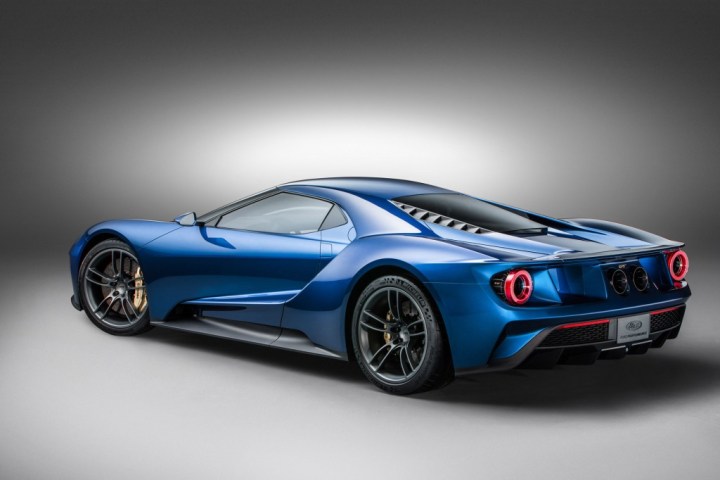
Ford is reintroducing its halo car for a new generation. The 2017 Ford GT debuted at the North American International Auto Show in Detroit last year. A mid-mounted, EcoBoost twin-turbo 3.5-liter V6 produces over 600 horsepower. The seats are built into the carbon fiber passenger cell, so they cannot be moved. The GT features an electronically adjustable steering wheel and pedals, similar to the system found in the LaFerrari.
The GT’s front end is tipped with a carbon fiber air splitter, a cavernous air dam, and two large hood vents. The body and tub are made of hand-laid carbon fiber, which creates a tremendous power-to-weight ratio. Massive intercoolers and turbos feed air to the engine, while excess heat is passed through the car’s hollowed-out taillights.
It is rumored that initial production of the Ford GT will be limited to 200 units, of which 100 will be allocated for the U.S., according to a source at Autoweek. The remainder will be sold in the UK and other global markets, particularly in Europe. The total expected run will be under 1,000 over the car’s lifetime. Compare this to the two-year production run of the previous generation, which ended at just over 4,000 units.
With a starting price of around $400,000, the next GT will be as far out of reach as the world’s most exotic cars. There are also rumors of a screening process that will make things difficult for even the most well-heeled gearheads. Ford will handpick customers for the 2017 GT, based on brand loyalty and ownership of the previous GT. Other companies including Ferrari, McLaren, and Porsche have employed similar methods to single out those they deem to be the most worthy of their flagship vehicles.


